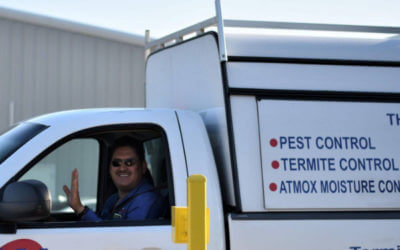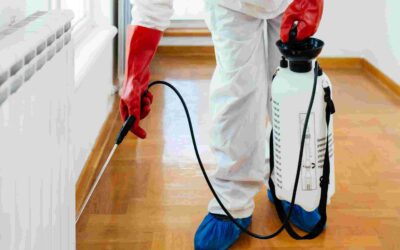
Termite Control | Top 4 Signs of Termites
No one wants to have termites in their home. Not only is having insects infesting your home unpleasant, they can destroy the structure of your house. They won’t limit themselves to the house either – they’re happy to eat your wood furniture and any other wood in the area.
Beyond this, termites can bite and cause allergic reactions. Their nests release dust that can make asthma or allergies much worse. Termites also favor damp areas, and they spread mold as they work their way through the wood in your home.
As you can see, you definitely want to take active termite control steps to handle this problem. But first you have to know that termites have invaded. Here are five signs to watch for.
Swarmers and Wings
Termite swarmers are young males and female termites that have wings. After the last freeze of spring, these young adults come out to mate and find a new place to start a colony. If you see swarmers, you know there’s a problem.
You might not see them directly, but there’s another sign they leave behind – their wings, which fall off after mating. Keep an eye out near windowsills and doors.
If you see any wings or swarmers, be sure to contact termite control specialists right away.
Wood Damage
Unfortunately, you won’t see surface damage in your wood that makes termites easy to identify. Instead, termites damage wood from the inside out. Watch for blisters in wood and pay attention to any wood that sounds hollow when you knock on it.
You might also be able to see spots where they’ve made it through to the outside as you look things over. Damage under your wood floor can make the wood on top look like it has water damage. You might also notice uneven or bubbling paint.
As termites eat through wood to get cellulose, they leave grooves that weaken wood. It can break and reveal a honeycomb interior.
If you find this type of damage, you need termite control right away.
Mud Tubes
The most destructive type of termite lives underground. These subterranean termites build mud tubes to maintain moisture while they travel between the colony and the food source. Mud tubes are a sure sign that you need termite control measure immediately.
You are most likely to see these mud tubs near your foundation where the termites are moving in and out of your home, eating any wood they can find.
Termite Droppings
The droppings of drywood termites, which nest inside of wood, are often noticeable. Called “frass,” these droppings are wood-colored and look like a small pile of pellets. If you find these pellets inside or outside of your home, it’s a sure sign that termites have taken up residence.
You should be sure to take steps to implement pest control as soon as you notice any of these signs.
Get Regular Inspections and Professional Termite Control
Termite chemicals are not dangerous to humans if they are used correctly, but it’s easy for a DIYer to make significant mistakes that can injure themselves, family members, and pets.
Instead, get professional termite control from a company that specializes in helping homeowners with termites and other pests. You should also get termite inspections every one to three years. These inspections can help spot a termite problem before the signs become obvious to you.
Concerned about termites or ready to schedule an inspection? Contact us today – we’re happy to help.
More posts from West Termite, Pest & Lawn
Spring Into Action: Preventing Termite Infestations in Arkansas Homes
Termite infestations are a serious concern for homeowners in Arkansas, especially during the spring when these pests become most active. Preventing termite infestations early can save you from expensive structural damage and long-term headaches. Termites thrive in the...
Early Spring Lawn Care Tips: How to Keep Your Arkansas Yard Healthy
A healthy lawn starts in early spring. If you want lush, green grass by summer, the groundwork begins as the weather warms and the soil softens. The right early spring lawn care routine is essential for homes in Arkansas, where fluctuating temperatures and humidity...
Mosquito Season is Coming: How to Protect Your Arkansas Home This Spring
Spring is here, and with it comes mosquito season. As temperatures rise and moisture increases, mosquitoes begin to thrive across Arkansas. If you are not prepared, these presets can quickly invade your yard and turn outdoor activities into a battle against bites. The...



